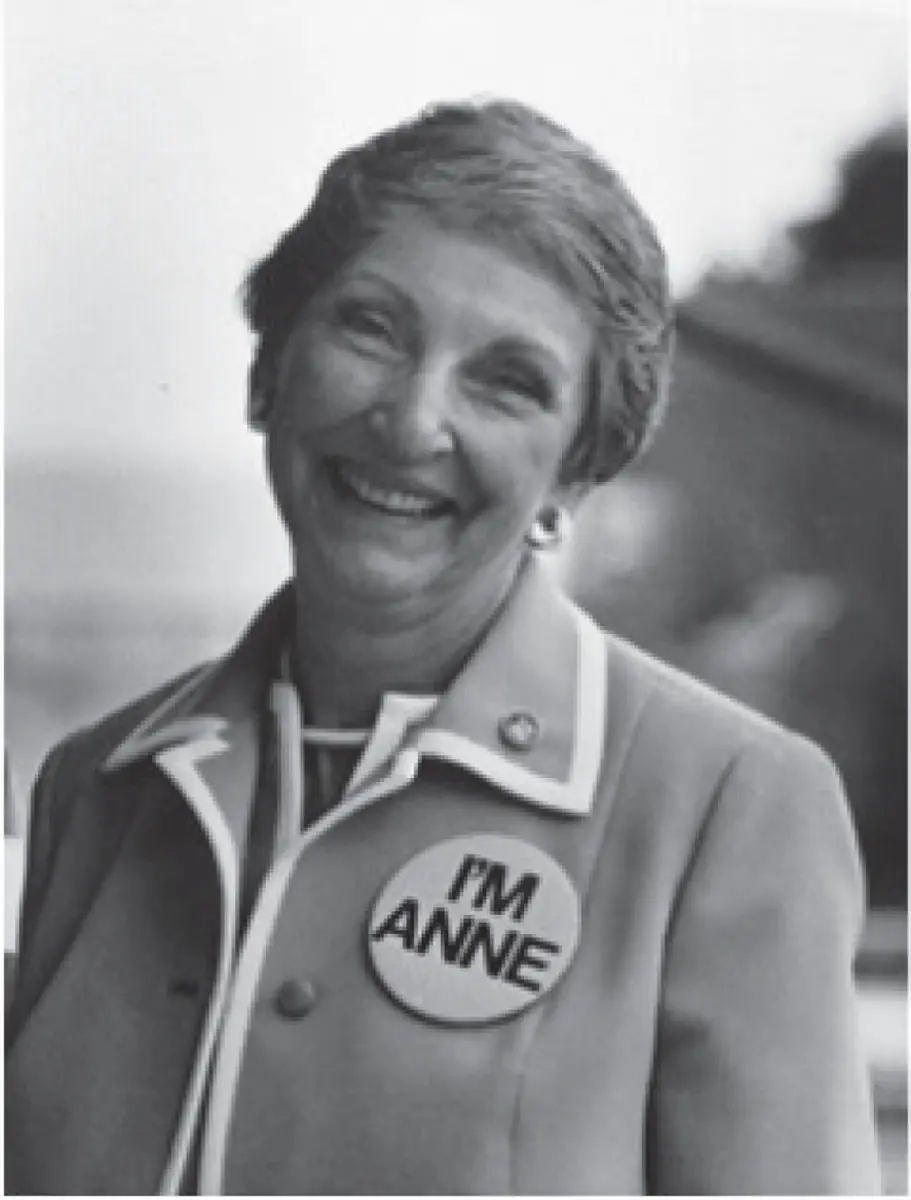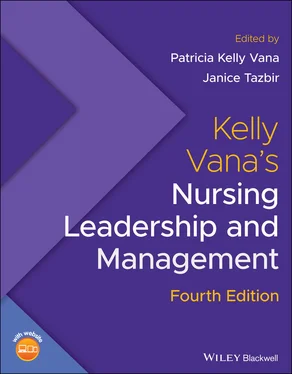Nurse leaders were concerned at the direction nursing education was taking. Some university schools of nursing were opening and the large teaching hospitals still gave a broad education and attracted well‐educated nursing students. But these nurse training schools were in the minority. The Committee on the Grading of Nursing Schools, cited earlier, publicized this issue but did not correct it. The correction came from the financial collapse of the Great Depression. In essence, people could not afford to hire nurse training school graduates as private duty nurses. Thus, the graduate nurses were desperate for work and accepted positions in hospitals for just their room and board. This being even cheaper for hospitals than operating training schools, the smaller, poorer schools rapidly began to close. From 1926 to 1936, there was a drop in the number of hospital‐based diploma nursing schools nationwide, from 2,155 schools in 1926 to 1,478 schools in 1936 (JAMA, 1937).
Anne Larson Zimmerman, born in 1914, graduated with her diploma in nursing in 1935. Later she remembered a nursing school instructor whom she had greatly admired, who told Zimmerman that she, “had been promised when she came that if her work was satisfactory after the first year, she would be given a raise in salary,” and then the superintendent said to her, “Well, we're doing so much charity and we are so poor that we really won't be able to give you a raise,” and she said, “Well, but sister, I am doing your charity, not you … and I don't think I should subsidize what you call your charity” (Fitzpatrick, 1985, p. 2). Zimmerman's nursing school instructor's words remained with her as she worked as a single mother in Montana, California, and finally in Illinois. As the Executive Director of the Illinois Nurses Association, Zimmerman encouraged nurses to stand up for their rights. At Chicago's Cook County Hospital, where the conditions for nurses and patients were awful, a colleague remembered that Zimmerman “was excellent. There on every picket line. Always there. She would never ask you to do something she had not done herself” (Stafford, 2016). As President of the ANA from 1976 to 1978, Zimmerman advocated for economic welfare for nurses, nationalized health care, and passage of the equal rights amendment. Not surprisingly, Zimmerman successfully argued that the ANA president deserved a salary.
With some insight into nursing history, what do you think about nurses unionizing today?
Zimmerman remembered a former nursing instructor who would not accept the superintendent's denial of her raise. What is your opinion of the nursing instructor's argument that she should not have to subsidize “what you call your charity”? Figure 3.4
 FIGURE 3.4 Anne Zimmerman.
FIGURE 3.4 Anne Zimmerman.
Source: Anne Zimmerman Collection, Midwest Nursing History Research Center, University of Illinois at Chicago, College of Nursing.
Collegiate Education in Nursing
Mary Adelaide Nutting, a renowned nurse educator and activist, declared in 1908, “There is no place in its (the hospital) strenuous scheme of life for the machinery of a school. All the space, the effort, the means which the hospital can provide are needed to carry out its immediate purpose, which is the care of the sick, and any scheme of education must, of necessity, take a secondary and insignificant place” (Nutting cited in Grace, 1978, p. 20). In other words, nursing education had to get out from under hospital control. But, until the mid‐1950s, most nursing programs continued in the 3‐year diploma, hospital‐based training model.
University programs for nurses had been around since 1909, but their development was accelerated by a study, commissioned in 1948 by the National Nursing Council, to examine who should organize, administer, and finance schools of nursing. The National Nursing Council was composed of multiple constituent nursing organizations. The study's Director, Esther Lucille Brown, an anthropologist, strongly recommended that nursing education move out of hospitals and into colleges and universities (Brown, 1948). Starting in the mid‐1950s, the number of 3‐year diploma, hospital‐based nurse training schools went down and the number of baccalaureate and associate degree programs increased.
In the early 1950s, after World War II, there occurred, as has happened quite regularly over the years, a nursing shortage. Nurses leaving the profession, many of whom wanted to get married or to start a family after the war, exacerbated this shortage. Other nurses, who had served in the armed forces, didn't want to return to the constraints and rules of civilian nursing and, possibly, wanted to utilize the G.I. Bill of Rights to gain a college education. In addition, the Hill‐Burton Act of 1946 supported extensive new hospital construction, which required more nurses. Mildred Montag, a nurse who was pursuing a doctorate in education at Teachers College, Columbia University, in New York, proposed a novel educational solution. Her dissertation, titled “Education for Nursing Technicians,” proposed a 2‐year Community College program for nurses. Nursing technicianscould, as conceived by Montag, perform the technical rather than the professional components of nursing (Montag, 1963). A later grant enabled Montag to put her proposal into action in seven Community Colleges in six states, New York, New Jersey, Michigan, Utah, California, and Virginia (Montag, 1959). Montag's study showed that the 2‐year nursing program, and at this time it was just 2 years, with 1 year of general studies and 1 year of nursing, attracted non‐traditional students. Furthermore, graduates of the 2‐year program compared favorably with 3‐year diploma graduates in terms of test scores and satisfaction from all parties. Montag's plan was for the 2‐year associate degree program to develop a technical nurse—not a “professional” one (Montag, 1963). She thought that associate degree and baccalaureate degree programs should not blend with each other because they were just too different (Orsolini‐Hain & Waters, 2009). Supported by the Nurse Training Act of 1964, associate degree nursing programs grew exponentially. By 1980, approximately 80% of new graduates were from associate degree programs (Orsolini‐Hain & Waters, 2009).
Meanwhile, back in 1899, Teacher's College at Columbia University in New York had established the first graduate education program for nurses in the fields of hospital economics and educational administration (Grace, 1978). However, the bulk of nursing graduate education was developed in the 1950s and 1960s, as the need for nurse educators in the college programs expanded (Gerard, Kazer, Babington, & Quell, 2014). The early nursing graduate programs focused mainly on education and administration. Later, in the 1960s, graduate degrees for clinical nursing roles came to the forefront (Gerard et al., 2014).
The Development of Nursing Research in the 1950s to the 1970s
Early nursing research focused on the education of nurses. This was understandable because graduate degrees for nurses had been based on theories of education. But as nursing education started to shift away from hospital‐based schools to colleges and universities, a separate and independent body of nursing knowledge was needed. That is, nursing needed to clarify the scientific knowledge behind nursing practice.
Essential to an independent body of nursing knowledge was the development of independent theories of nursing. In 1959, nurse Dorothy Johnson wrote: “…the question of the existence of a body of substantive knowledge which can be called the science of nursing…is a question of considerable significance for nursing's continued development as a recognized professional discipline” (Johnson, 1959, cited in Tobbell, 2018, p. 65). Historian Dominique Tobbell (2018) has outlined three reasons why theories of nursing were developed during the 1960s and the following decades.
Читать дальше

 FIGURE 3.4 Anne Zimmerman.
FIGURE 3.4 Anne Zimmerman.










